Old copies of Delineator magazine always have surprises that catch my eye.

December fashions, Delineator magazine, 1918, top of p. 64. Butterick patterns 1276, 1260, 1255, and 1243.
Parts of the December 1918 issue were probably ready to print before the Armistice was announced on November 11, and the magazine contains many references to World War I.
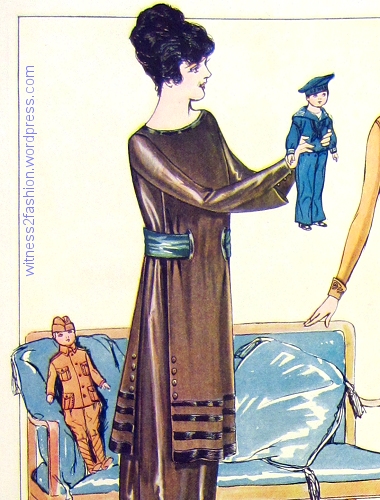
Butterick doll clothing: “boy doll’s military suit,” pattern 402, and “boy doll’s sailor suit,” 403. Delineator, December 1918. This woman’s “one-piece dress” pattern was available up to size 44.

But the “theme” of the month seems to be fringe. Here is the bottom of the same page:
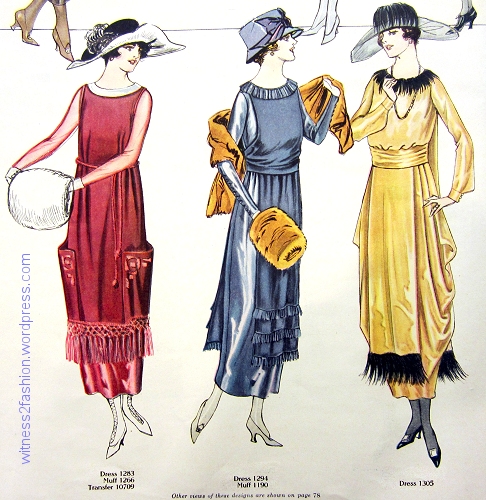
Butterick patterns for women, 1283, 1294, and 1305. December 1918. Two are fringed, and the gold dress is trimmed with black monkey fur. Delineator, p. 64.

Pattern descriptions for Butterick 1283, 1294 and 1305, December 1918. Delineator.
Fringe could be light-weight, like chenille, or made from heavier silk or cotton. I have encountered monkey fur coats in costume storage. [Eeeeeek. Just as unpleasant as having the paw fall off a vintage fox fur stole.]
More fashions with fringe appeared on page 63:
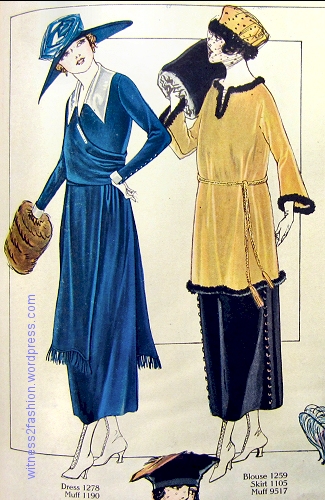
The blue dress (1278) is trimmed with fringe; the other outfit (blouse 1259 and skirt 1105) is trimmed with fur and decorative buttons. Delineator, Dec. 1918, p 63. Two different muff patterns were illustrated, 1190 and 9517.
In addition to keeping your hands warm, a muff often had an interior pocket that functioned as a purse.
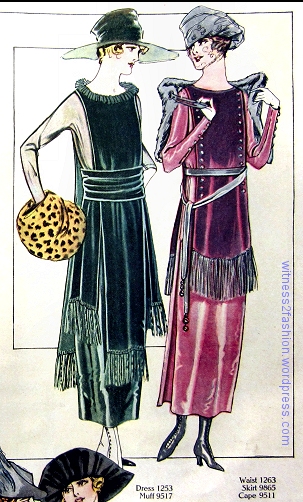
Two more fringed day dresses, Dec. 1918. Delineator, p 63. Butterick 1253 and waist/blouse 1263 with skirt 9865. No. 1253 is illustrated in satin; waist 1263 is in velvet, worn over a satin skirt.
More fringe from December 1918:

Butterick patterns illustrated in Delineator. Dec. 1918, page 65. Fringe trims the center two.
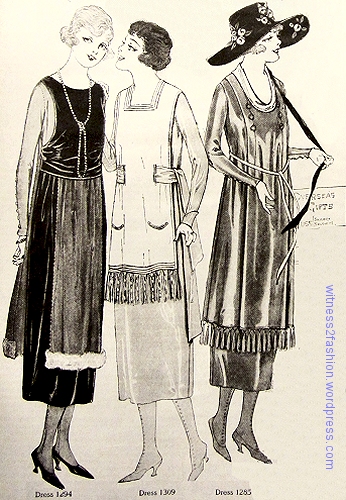
Fur or fringe trims these Butterick patterns in Delineator, page 71, December 1918. Women’s dresses No. 1294, 1309, and 1285.
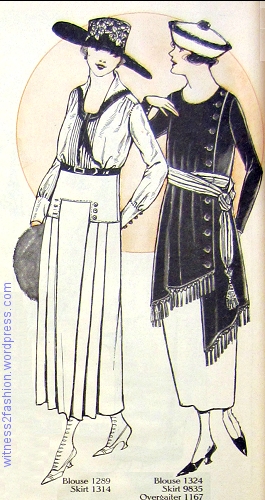
Butterick patterns, Delineator, Dec. 1918, p. 68. The shape of the skirt is determined by the high-waisted, curve-flattening corset of the era.
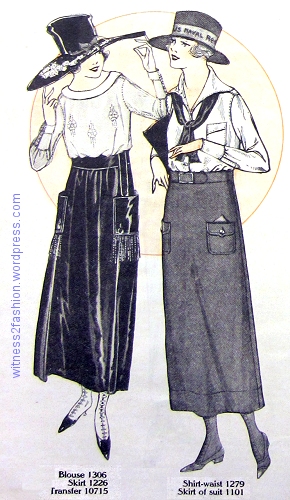
Fringe hangs from the pockets of a skirt, Delineator, Dec. 1918, p. 68. Butterick blouse 1306 with skirt 1226. Shirt-waist pattern 1279 with skirt of suit 1101.
In October, Butterick suggested a fringed wedding gown, pattern 1169, shown again in November in a dark, velvet version:
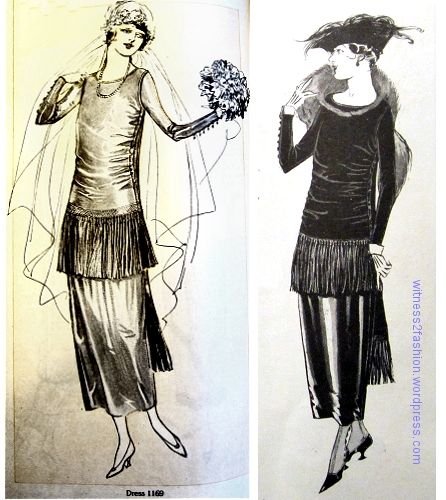
Left, wedding gown 1169, Butterick pattern from October 1918; right, the same pattern in velvet, worn for a formal daytime occasion. (November, 1918.)
If you weren’t ready to go wild with fringe, you could carry a subtle fringed handbag instead of a muff.

Winter coats from Butterick December 1918. The woman in the center carries a striped muff (Butterick 1266) to match her coat; the woman on the right carries a fringed handbag (Butterick pattern 10720.) Delineator, December 1918, p. 66.
The coat on the right is a reminder that the “Barrel skirt” or “tonneau” was [to me, inexplicably] in fashion for a while.
